We're an affiliate
We hope you love the products we recommend! Just so you know, we may collect a share of sales or other compensation from the links on this page at no additional cost to you. Thank you if you use our links, we really appreciate it!
If you’re a pet owner with a green thumb, then you’re in for a treat as in this article we have listed for you 30 indoor plants that are safe for dogs! Read on to find out which plants you and your dog would love.
Gardening is one of those things that relieve the stress in our daily lives. Plus, partner it with your canine companion; it is the supreme relaxation combination.
But as we all know, certain plants can be poisonous to your furbaby, and we do not want an unfortunate incident if they accidentally ingest it.
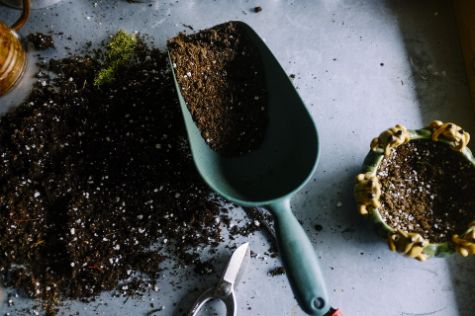
Dogs are born to be curious animals, and they are hotwired to sniff and chew anything that seems enticing, including plants in your home or your yard.
As much as we want to grow bountiful varieties of plants in our home, it is better to choose safe plants for your furbaby. If you are not sure if a particular plant is toxic, it is better to get rid of it immediately.
In this article, we will be exploring the beauty of nature and list down plants that are safe for dogs, with the bonus of giving your home some green, lush atmosphere.
We will also be listing down some plants that are a big no-no for your dogs. Better be safe than sorry, right?
Common Household Items that are Poisonous to Dogs
In the US, 214,000 dog poisoning cases are reported each year, and surprisingly 5% or 11,000 of these poisoning cases are due to houseplants.
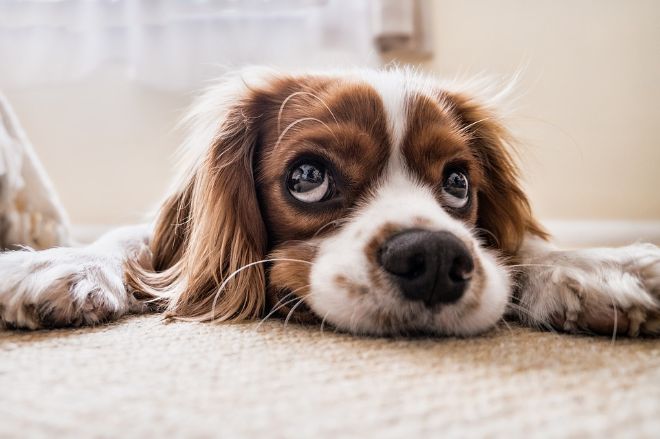
Certain household items are safe for humans, including certain foods and medications. Still, they can cause enormous problems for our dogs, such as gastrointestinal and neurological issues, cardiac and respiratory distress, or even coma and death.
30 Dog-Friendly Houseplants
Adding greenery to your home is a way to clean the surrounding air and improve your mood. But as pet parents, we should also be thinking of safe plants to be around our furbaby.
Fortunately, there are various plants that dogs won’t eat, and if they do, they won’t get sick from them. Let’s find out 30 of the most common dog-friendly houseplants that you can grow without worrying about your dog’s safety.
1. Areca Palm
Searching for a large houseplant that’s safe for both cats and dogs? Forget about Sago Palms, which is highly poisonous, and opt for this pet-friendly alternative instead, Dypsis lutescens.
Areca palms are big houseplants that can grow up to 1-4 meters tall and have multiple varieties to choose from, such as Golden Butterfly Palm, Cane Palm, Golden Feather Palm, and Yellow Palm.

Growing this plant will be painless as they can grow in moist soil, with bright and direct sunlight. Not only are they beautiful to look at, but they are also great indoor air purifiers, removing pollutants from the air.
2. Rattlesnake Plant
If you have a low-light living room, then a Rattlesnake Plant (Calathea lancifolia) is the one you’re looking for.
The colors and distinctly shaped leaves make the rattlesnake plant a great houseplant to a low-light living room. This plant is low-maintenance due to its easy watering schedule that can be done in a breeze.
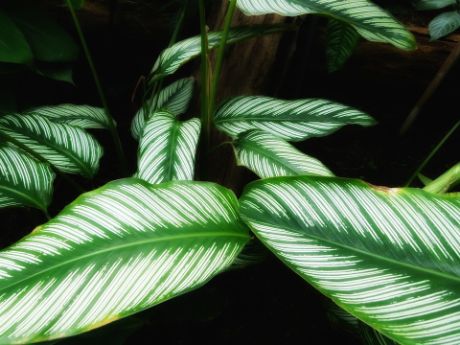
One more characteristic that you’ll love about this plant is its leaf movements. Yes, you read that right, their leaves move!
Every night, the water pressure at the base of the plant’s node decreases, causing its leaves to lean towards the ground. The morning after, the leaves will rise again, looking happy as ever.
3. Gloxinia
Gloxinia plants (Sinningia speciosa) are popular gift plants, especially around holidays such as Valentine’s Day and Mother’s Day due to their trumpet-shaped flowers, boasting brilliant colors like crimson, violet, and white.
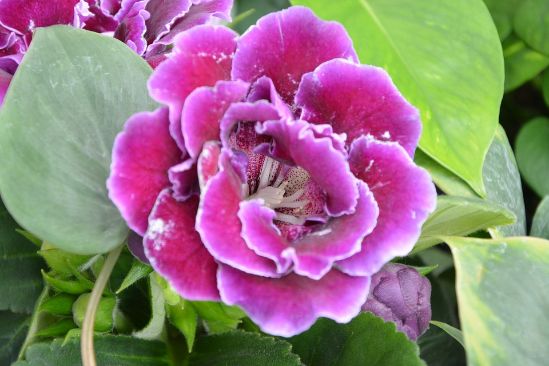
If you receive one of these great bloomers, you won’t need to worry about harming your cat or dog.
Taking care of this plant is relatively easy as well. Just provide indirect light and constant moisture, and you’re all good to go.
4. Spider Plant
Spider plants (Chlorophytum comosum) are named for their eight-legged look without the appearance of being creepy crawly.
Not only the Spider plant is safe for dogs, but it also helps in purifying toxic gases from the surrounding air like formaldehyde, xylene, and toluene.

Popular among gardening beginners due to the ease of maintenance, Spider plants are easy to clip and prune and are best kept in indirect sunlight.
If you prefer them as hanging plants, it is perfect for your living room plus, the placement will be impossible for dogs to nibble on.
5. Lipstick Plant
Getting its name from their flowers that look like lipstick tubes, the Lipstick plant is a native flower part of the Peperomia family.
Lipstick plant thrives in bright light and loves being outside in warmer months and can grow up to 50 cm tall and likes to have consistently moist soil, so a strict watering routine is a must.

6. Parlor Palm

If you’re looking for a small tree indoors, you may want to consider getting a parlor palm (Chamaedorea elegans), a dog-friendly houseplant that is a good start for new gardeners since it is low maintenance.
It can grow palm fronds ranging from 1 to 4 meters and is sure to brighten up your room with green leafage.
It grows best in bright, indirect light, such as near your window, but can also tolerate low light. Parlor palms should only be watered when the top inch of soil is dry.
7. Friendship Plant
The friendship plant (Pilea involucrata) is named because it can be divided and shared among friends and have them planted separately.
If you get one as a gift from a friend, you can ensure that even if your furbaby takes a bite out of this plant’s fuzzy, crinkly leaves, they will be safe and sound.
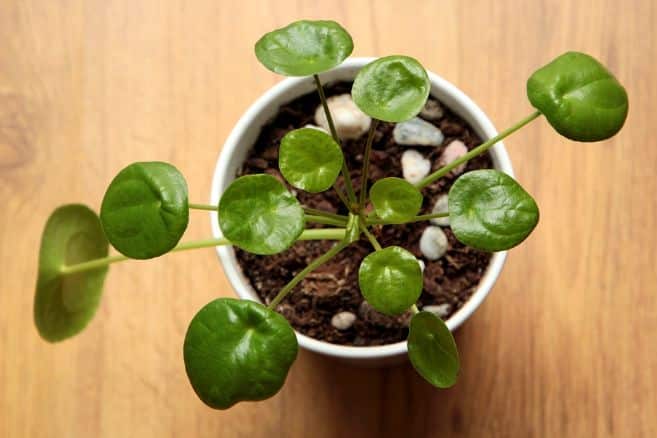
Friendship plants tolerate medium and low light and preferably be placed inside a terrarium for their love of humidity. It is a small plant perfect for shelves as it doesn’t grow taller than 30 cm.
8. Christmas Cactus
Christmas cacti (Schlumbergera) are non-toxic plants safe to have around curious cats and dogs.
Christmas cacti can easily be confused with Thanksgiving cacti, but don’t worry because both are safe for pets and have similar care requirements.
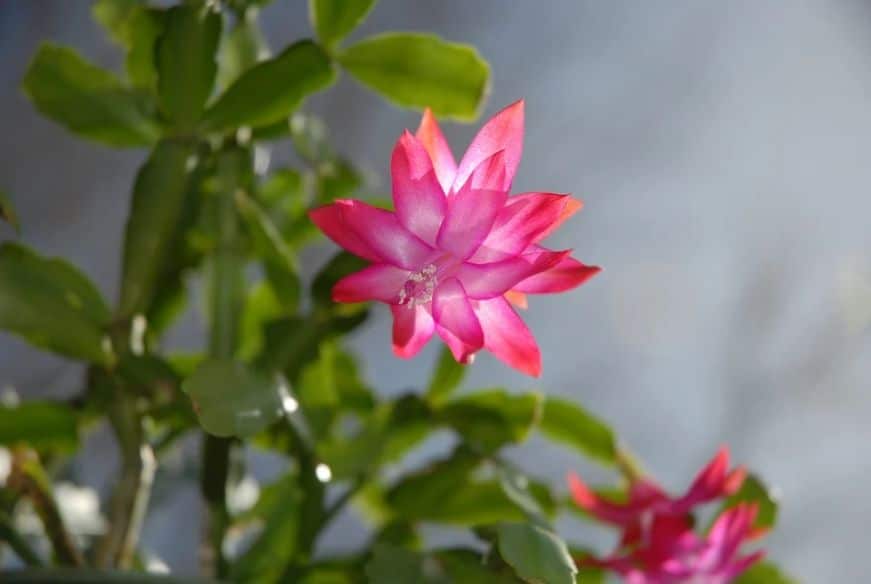
Christmas and Thanksgiving cacti are perfect as shelf plants as they only grow 30 cm tall but can spread up to 60 cm wide and grow best with regular waterings and bright, indirect light.
9. Aluminum Plant
The mesmerizing pattern of gray-and-green leaves of aluminum plants (Pilea cadierei) makes it a great addition to your blossoming indoor garden.
It usually grows shorter than 30 cm, grows well in medium to low light, and only needs water when the top of the soil is dry.
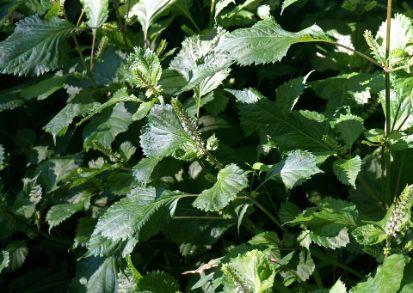
Since it tolerates low light, you can grow it almost anywhere that’s out of reach of your furbabies, such as your tabletop, shelves, dresser, etc.
10. Air Plant
Tillandsia varieties are excellent pet-friendly, low-maintenance houseplants because they are aerial plants, which means they don’t need soil to grow.

Most air plants will stay smaller than 30 cm, and they are best placed under bright, indirect light with a quick soak in water about once a week.
Having these plants hanging high above, dogs will never get a chance to play with this plant, and it will bring a green ambiance to your living space.
11. African Violet
If you want gorgeous, colorful blooms in your home that are safe for your dogs, look no further and consider getting an African Violet (Saintpaulia).
This flowering houseplant can color up even the smallest spaces because it stays less than 30 cm tall.
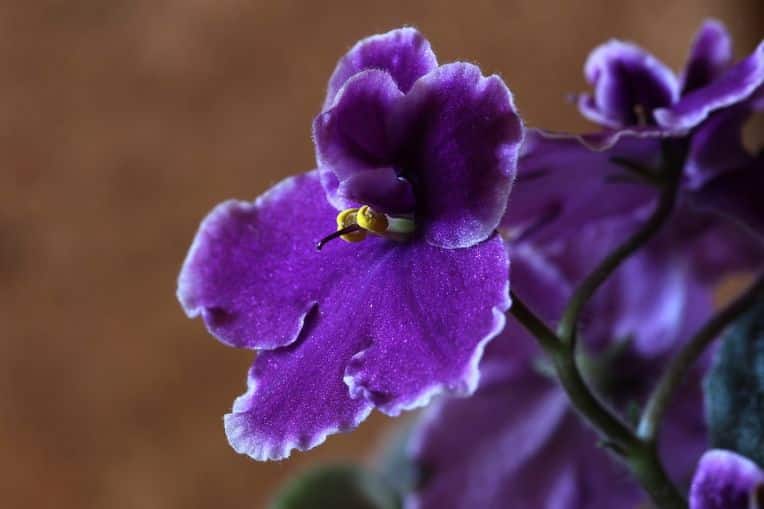
African Violet comes in a range of purple and pink hues and thrives without bright light.
Keep the soil moderately moist, and water it by letting them soak up water through the pot’s drainage hole to avoid damaging the leaves and petals.
12. Lace Flower Vine
Lace flower vine (Alsobia dianthiflora) is a low-maintenance houseplant that grows best in hanging baskets, making it perfect for your curious dogs.
Hang this plant in a spot with bright, indirect light and water only when the soil starts to feel dry. This plant can have dangling stems and leaves up to 90 cm long.

13. Moth Orchid
Moth orchids (Phalaenopsis Blume) are among the most common orchids that you can easily get in most flower shops.
Although this plant is non-toxic to your dog, there may be a chance that they may chew the potting mix, made up of bark chips, which are not toxic but may cause tummy troubles if swallowed.
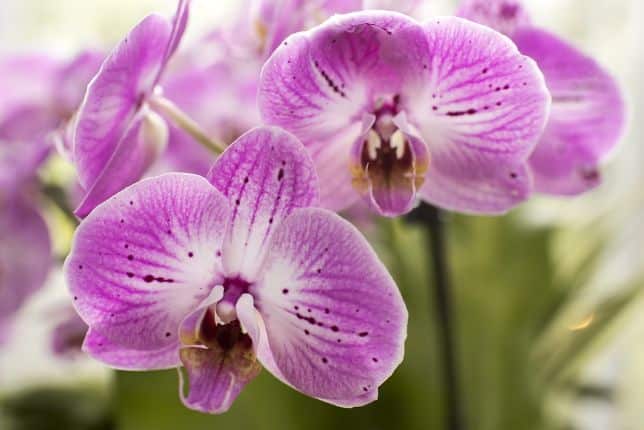
Usually grows between 30 to 90 cm tall, this house plant can thrive on low, medium, or bright light, and generally needs water once a week, or every other week, making it perfect for busy pet parents.
14. Polka Dot Plant
Polka dot plants (Hypoestes phyllostachya) will surely add color to your living space with its pink and white leaf patterns.
It is easy to maintain, and the best part is, you can control the size of this plant by placing it in appropriate containers.
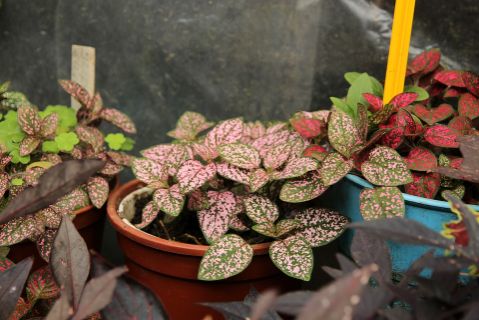
It can grow up to 100 cm in open space, but if you put it in a terrarium or any other container, it can grow for up to 30 cm; it’s all up to your preference.
Place it in an area with bright, indirect light and keep the soil consistently moist for better growth.
15. Herbs
If you love cooking, grab the opportunity to have your herbs directly harvested from your garden. Keep in mind that not all herbs are created equal when it comes to pet safety.
Lavender and oregano are not pet-friendly, but basil, sage, and thyme are all houseplants deemed safe around dogs.

Place these herbs in a sunny window that gets at least four or five hours of direct sunlight every day, and water when the top inch of soil is dry.
or more comprehensive guidelines on starting a herb garden, read this helpful article from Gardening Know How.
16. Haworthia
If you’re looking for a substitute for Aloe vera (which are toxic for dogs), look no further and get a Haworthia.

Similar in texture and size to a succulent, all Haworthia genus plants are safe for your furbaby. Being succulent, they’re easy to maintain, requiring just some bright light and weekly watering.
17. Cast-Iron Plant
The cast-iron plant (Aspidistra elatior) is a medium-sized houseplant that grows beautiful, broad green leaves. They are incredibly long-lasting as they can withstand extreme temperature changes, smoke, and dust.

This plant is also a favorite among gardeners with hectic schedules, as they need very little maintenance. Just keep them in indirect light and water them if the top solid is feeling dry.
18. Baby Tears
Baby Tears plant (Soleirolia soleirolii) is a cute, delicate, and luscious green perennial with tiny rounded leaves, perfect for small pots, terrariums, or hanging baskets.
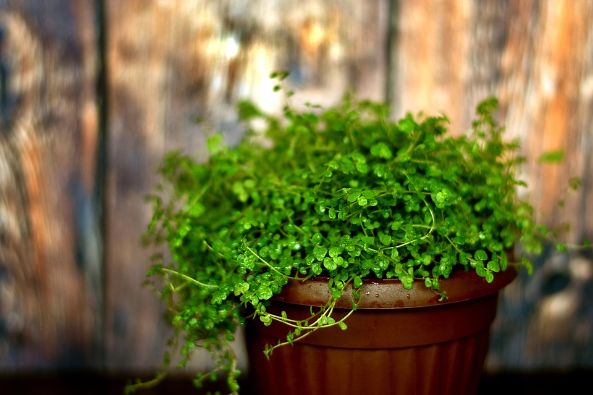
19. Bamboo Palm
If you want a tall plant to give life to your space, then a Bamboo palm (Chamaedorea costaricana) is perfect for you.
Also known as Good Luck Palms, these tall plants, which can grow up to 3 meters, are considered non-toxic to pets and add greenery to any living space.
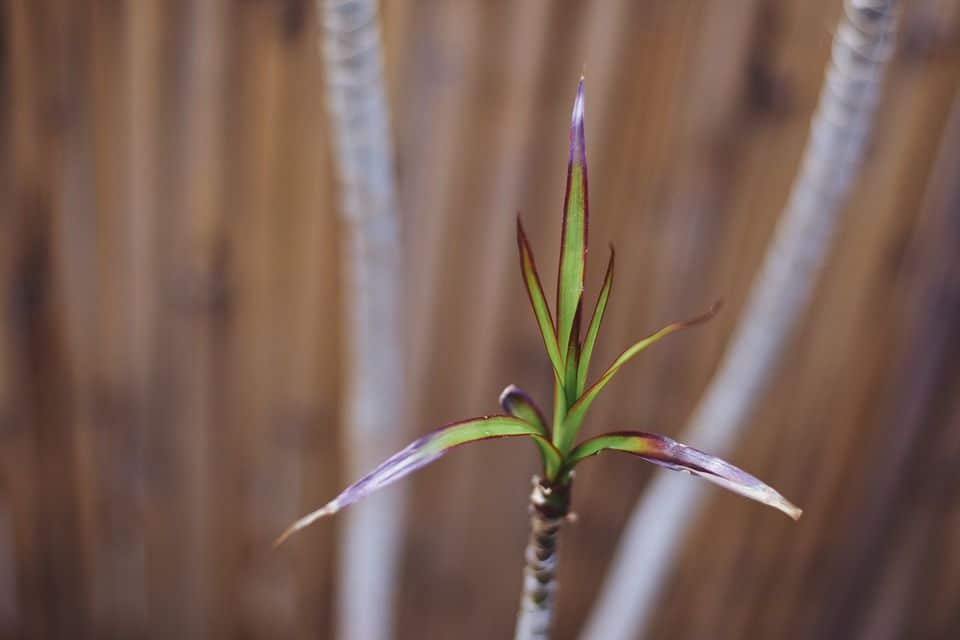
They grow best in shady environments with little light, so it’s perfect for a darker home or apartment.
20. Cape Marigold
Cape Marigolds (Dimorphotheca), also popular as Garden Marigolds and Golden Marigolds, are non-toxic houseplants with orange and yellow daisy-like flowers that give any room a splash of vibrant color.

Taking care of Cape Marigold is moderate, with the assistance of scheduled weeding and routinely watering.
21. Boston Fern
Boston fern (Nephrolepis exaltata), also known as sword fern, is an all-around safe houseplant looking amazing in hanging baskets.
Although Boston fern is non-toxic, it is vital to place this plant in a high enough place as it can cause stomach cramps if ingested by your furbaby.

They are easily maintainable and thrive in environments similar to their natural habitat; the jungle floor, high humidity, wet soil, and bright, indirect light. A perfect area to put a Boston fern is the bathroom.
22. Venus Fly Trap
Carnivorous plants are a fun addition to your houseplant collection. Don’t worry about your dog getting “bitten” by Venus flytraps (Dionaea muscipula) as they have a sensitive layer in their mouths that only snap shut if an insect touches it.
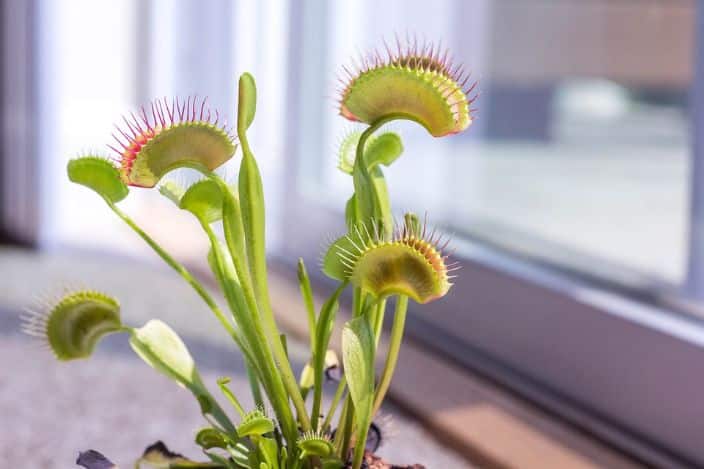
In addition to being a beautiful decorative houseplant, Venus flytraps can also eliminate any insect that tries to invade your home.
Taking care of this plant is relatively easy as it only requires bright light and irrigation with distilled water to keep your traps in a fly-catching condition.
23. Mosaic Plant
The mosaic plant (Fittonia spp.) is a rainforest native with lovely white or pink vine patterns on its leaves that is non-toxic to dogs.
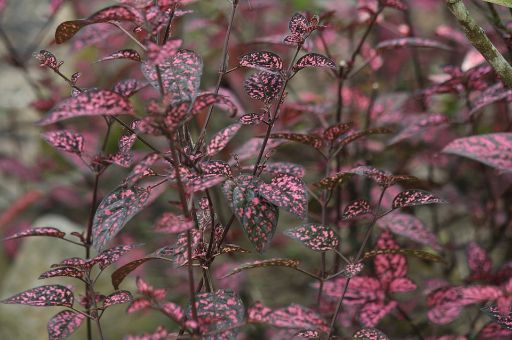
The small houseplant thrives in low light with moderate watering and only needs water if it feels dry.
24. Bromeliad
The bromeliad’s tough, strappy leaves (Bromeliaceae) and the beautiful cone-shaped blooms make these plants a favorite among pet parents and gardeners alike.
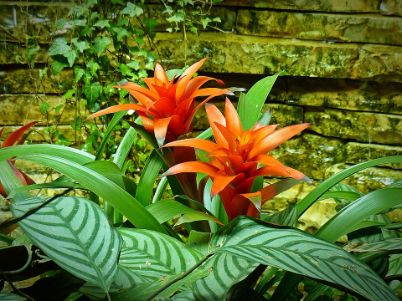
These plants are relatively easy to maintain, needing only a bright window and a humid environment.
Many bromeliads will grow similar to orchids attached to a log, making them even more pet-friendly for those curious dogs that love to jump.
25. Purple Waffle Plant
The textured leaves of the Purple Waffle Plant (Hemigraphis alternata) offer all-season interest for those who prefer non-flowering house plants with colorful leaves, ranging from green to purple.
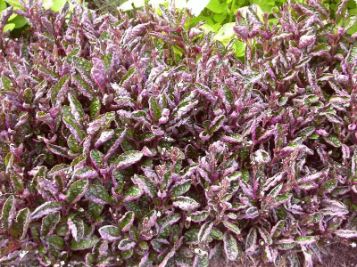
Bright, indirect light will help to maintain the purple coloration without bleaching the leaves. Purple waffle plants are also known as great air purifiers, keeping the air in the environment healthy for you and your pet.
26. Staghorn Fern
Staghorn fern (Platycerium) has two different kinds of fronds and grows abundantly in Australia.
This pet-friendly plant can be grown on pots, mounted on a wall, or hung in a basket, making it perfect for any gardeners who want interior decoration using plants.
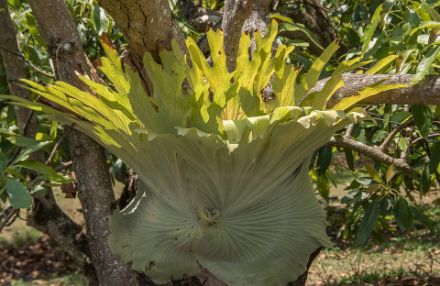
The staghorn fern will thrive in any room with bright, indirect light. Watering this plant will depend on its environment’s humidity, about once every one to three weeks.
If you place it in the bathroom, you’ll need to water and mist it only every three weeks.
27. Zebra Cactus Plant
If you’re on the hunt for a small shade-tolerant succulent, then a Zebra cactus plant (Haworthia attenuata) is perfect for your place.
Due to its shallowness, it can be grown in small pots and terrarium plus the mesmerizing zebra-like white stripe pattern, making it ideal as a decoration on your tabletops.
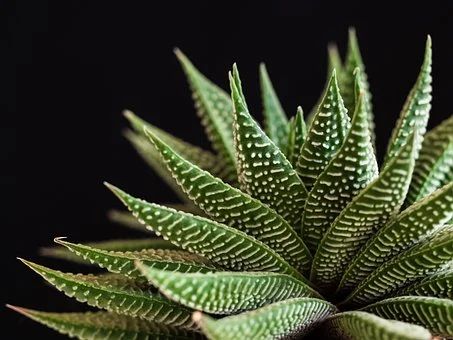
28. Prayer Plant
Ideal for small spaces, like tabletops and shelves, the prayer plant (Maranta leuconeura) is a colorful houseplant that grows just 15 to 25 cm.
Its name is derived from the movements of its red, cream, and green leaves, which curl up at night.
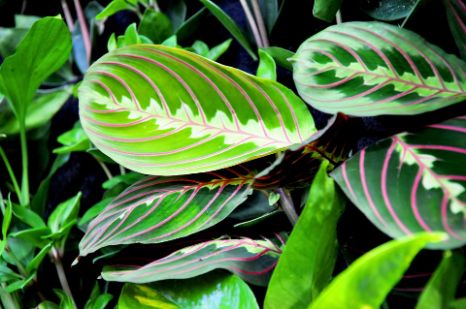
It’s one of the easiest houseplants to take care of that’s also safe for dogs. It grows best in medium or low light, providing watering only when you feel that the topsoil has dried out.
29. Blunt Leaf Peperomia
Blunt leaf peperomia (Peperomia obtusifolia) does not require much attention, making it popular among houseplant enthusiasts.
Its fleshy stems store enough water to sustain themselves, which means they do not demand frequent watering. This plant is ideal for both gardening and pet enthusiasts, as it is non-toxic to dogs.
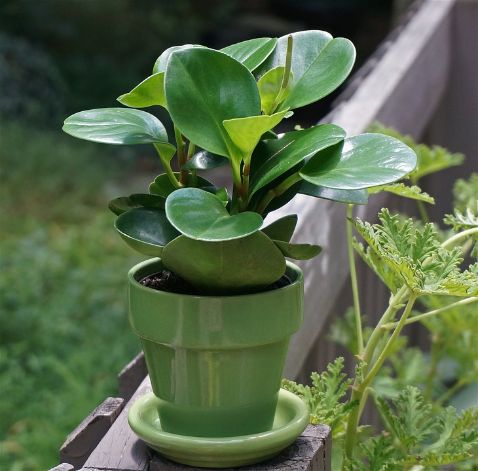
30. Bird’s Nest Fern
Bird’s nest fern (Asplenium nidus) is one of the best dog-friendly plants to grow indoors because it can thrive in low light conditions and grows anywhere from tree trunks to buildings in its natural climate.

With its lush green leaves, it can provide detoxification of the surrounding air giving you a cleaner environment plus the addition being a plant decoration.
6 Causes of Dog Poisoning
Pet owners need to know the possible causes of poisoning in dogs. Here are 6 major causes of dog poisonings that all pet parents should know about.
1. Medications
Coatings on everyday medications are enticing to dogs, as they taste sweet. Although safely consumable for humans, several medications can be toxic to dogs, and similar to humans, any medication can be harmful if consumed in high doses.

Ibuprofen and naproxen are the most common causes of canine poisoning, especially in smaller dogs.
Antidepressants, medications for ADHD, birth control pills, and most decongestants can also cause many medical concerns in dogs, including seizures and kidney failure.
How to avoid this?
- Keep all medications and prescriptions in a secure location, such as a medicine cabinet that can be closed.
- In case of accidental medication ingestion, reach out to your veterinarian immediately.
2. Rodents Poison
Some pets get curious about what a rodent poison tastes like due to its enticing smell, attracting mice and rats. Rodent poison ingestion can also happen if they hunt rodents that ingested the poison.
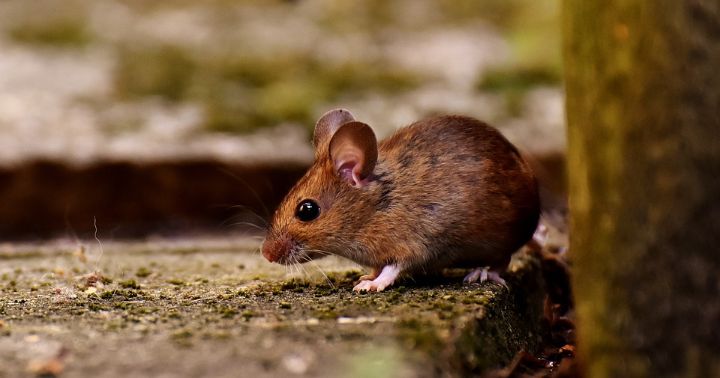
This poisoning’s main culprit is the chemical bromethalin, and affected animals will show symptoms from two days to several weeks after ingestion.
If you believe your furbaby has accidentally ingested a rodent poison, look for signs such as loss of appetite, impaired movement, muscle tremors, and seizures.
A dog who ingests rodent poison needs to have the digestive tract decontaminated immediately.
A veterinarian does this by inducing vomiting and giving activated charcoal and an osmotic cathartic to cause the bowels to empty.
How to avoid this?
- Make sure to store rodent poisons out of your furbaby’s reach.
- If you use rodent poison, make sure to place it where your dog will not reach it strategically.
- In case of accidental exposure, reach out to your veterinarian immediately.
3. Insecticides
Exposure to insecticides and pesticides can occur when your dog walks through an area recently applied with lawn and garden products, sprays, powders, or granules.
Dogs who are also avid eaters of grass can get poisoned if the yard is treated with insecticides or pesticides.
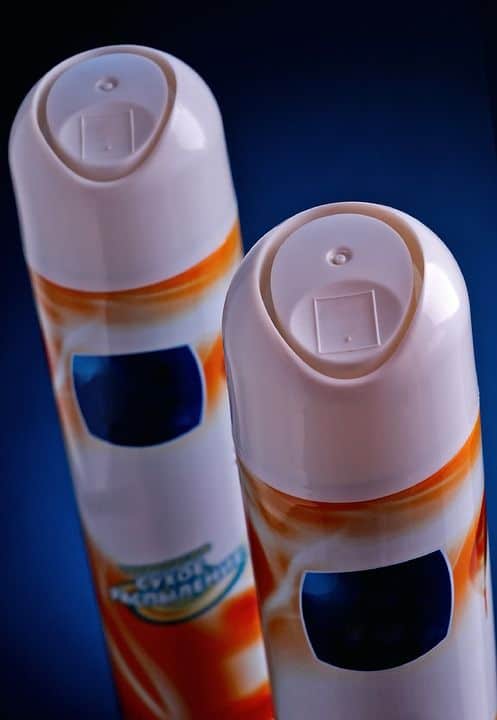
Insecticide poisoning symptoms to watch out for are fever, vomiting, anorexia, depression, muscle tremors, increased heart rate, and respiratory failure.
How to avoid this?
- Use and store these products carefully.
- Talk to your vet before using flea treatments if your dog is sick, as it will affect the body more quickly due to their weakened immune system.
- Don’t let your dog walk on a yard that is recently treated with insecticides and pesticides.
5. Household Cleaners
Common household cleaners contain a variety of toxic chemicals to your dogs. The severity can range from mild to life-threatening; regardless, it still needs to be prioritized.
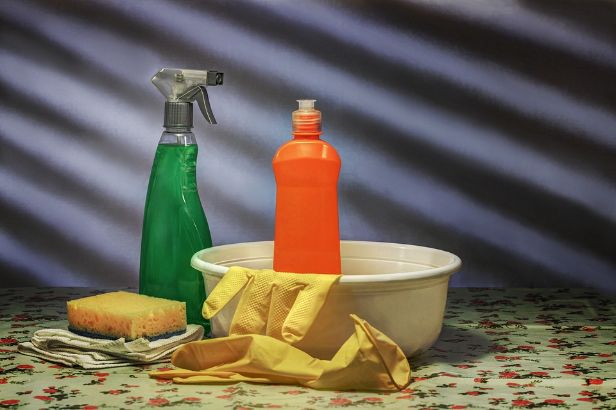
Detergents and fabric softeners can cause ulcers in the mouth and stomach, and household cleaners such as bleach, toilet bowl cleaners, and ammonia are also dangerous.
Naphthalene balls, or more commonly known as mothballs, have toxins that can lead to vomiting and diarrhea.
How to avoid this?
- It is essential to leave your furbaby in a safe place while cleaning using these products.
- Make sure to keep these products out of your furbaby’s reach and remove any excess after cleaning.
- In case of accidental exposure, reach out to your veterinarian immediately.
6. Some Household Plants
Common house and garden plants can be extremely toxic to dogs. Some of the symptoms can be mild to lethal, such as vomiting, drooling, increased heart rate, seizures, coma, and even death.

The ASPCA (American Society for the Prevention of Cruelty to Animals) has a complete list of toxic plants to watch out for, including lilies, autumn crocus, chrysanthemum, and English ivy, among many others.
How to avoid this?
- It is vital to know the kind of plant you are getting. If in doubt, it is best to get rid of it.
- In case of accidental exposure, reach out to your veterinarian immediately.
What To Do For Suspected Dog Poisoning
If you think your dog has interacted with any poisonous substance, remain calm. It is essential to act quickly but rationally.
First, gather up any potential poison that remains. This will be useful for your veterinarian to assess your dog’s condition. If your dog has induced vomiting, collect the sample in case your veterinarian needs to examine it.
Second, try to keep your pet calm and reach out to your veterinarian immediately. Your vet may give you instructions in administering first-aid and instructions on proper handling of the situation.

Now that you have a variety of plant options to choose from, ranging in size, color, and properties, which indoor plants are safe for dogs from our list are you getting? Comment down below!
Laura is the founder of Furs'n'Paws. She is a also a pet writer and expert with more than 20 years of experience of working with dogs and cats. She developed a very strong love for animals at a young age. Her passion led her to establish a thriving pet sitting and dog walking business in Dubai. As an expert in pet training, behavior, and nutrition, Laura is committed to helping pet owners and pet lovers by offering high-quality information on a wide range of topics.


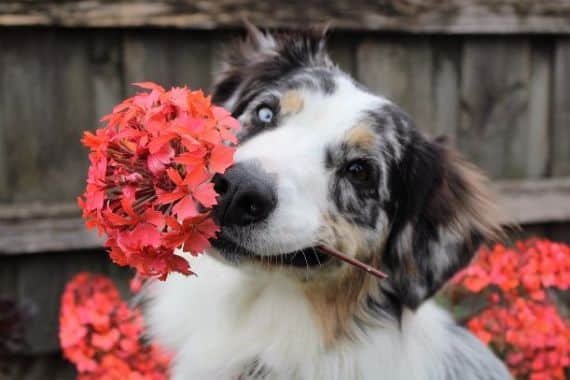
No responses yet